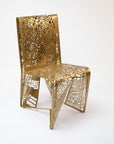
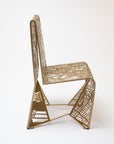
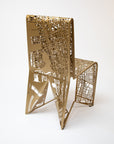
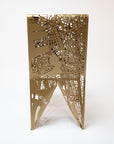
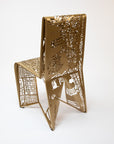
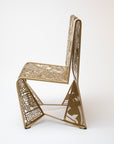
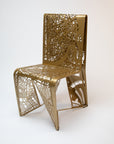
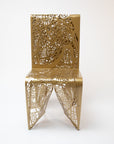
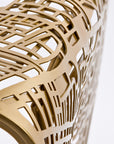
Aluminum Chair, Dubai - Prototype (Miners Gold)
This is a one-of-a-kind early prototype. Prototypes are sold as-is and have imperfections from testing and display. They are not guaranteed to withstand regular use and are sold to be displayed as art.
This Aluminum Chair prototype features four maps showcasing how Dubai has evolved over the past 190 years. This prototype is finished in Miners Gold.
Material: Aluminum
Dimensions: 18½in L x 18in W x 36¾in H
Weight: 14.2lbs
Color: Miners Gold
Prototypes are one-of-a-kind pieces that were handcrafted during our earliest days of design development. They are truly unique, fine art objects that can be shipped to your desired location upon ordering. Your lead time will be determined upon finalizing logistics.
Made From Four Layers of Historical Maps
OCCUPYING 190 YEARS OF DUBAI HISTORY
Top Layer
2023
Dubai stands as a global leader in commerce, tourism, and technological innovation.
Skyscrapers, luxury developments, and world-class infrastructure cement its reputation as a futuristic metropolis. Ambitious smart city initiatives and sustainability projects push Dubai toward a high-tech, environmentally conscious future. Economic diversification into finance, artificial intelligence, and blockchain strengthens its position as a business hub. Cultural institutions, fashion, and culinary scenes thrive, reflecting its diverse expatriate population. Strategic policies continue attracting international talent, reinforcing its status as a global investment destination.
Dubai’s rapid evolution showcases its relentless ambition to remain at the forefront of global progress.
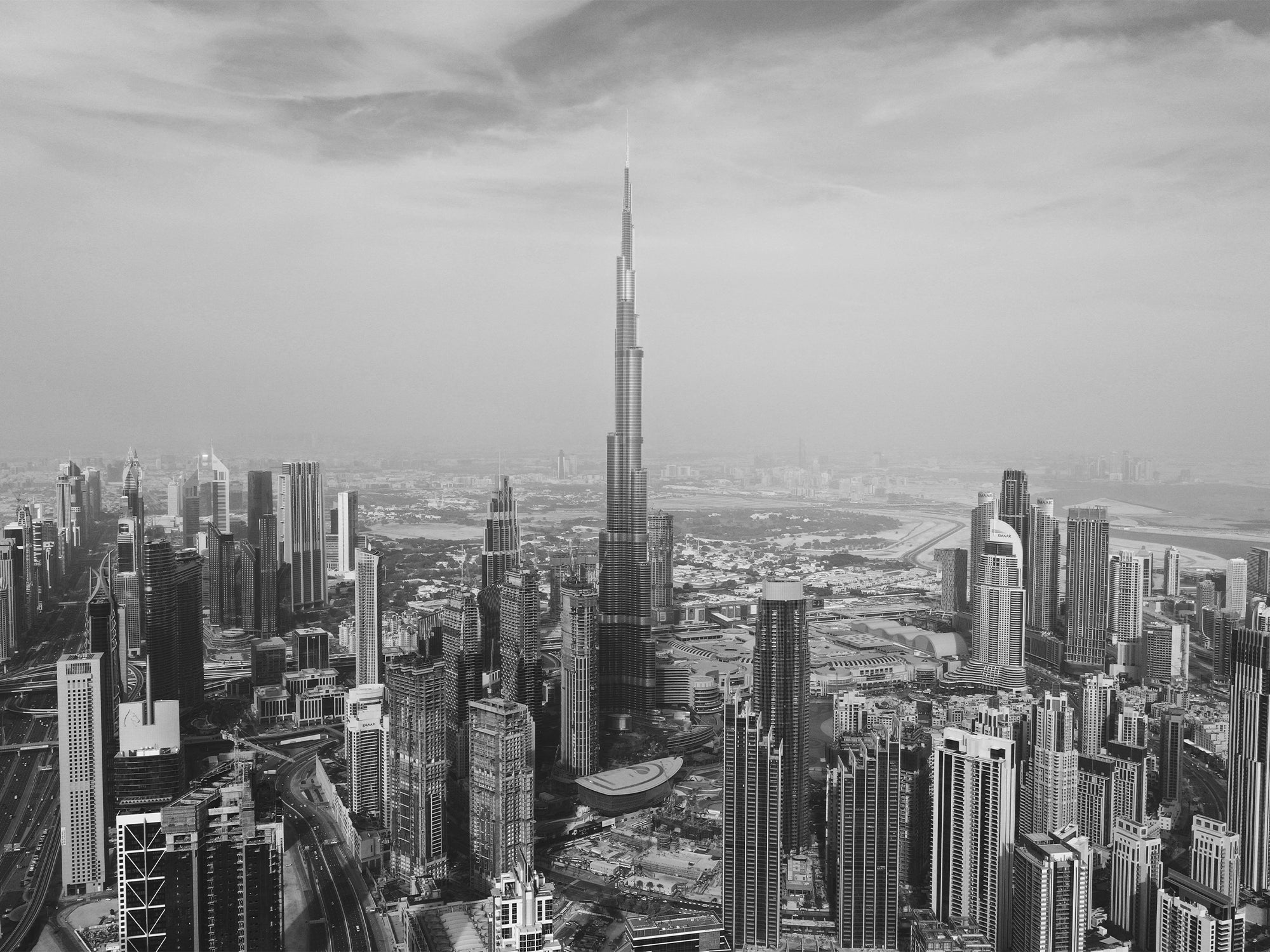
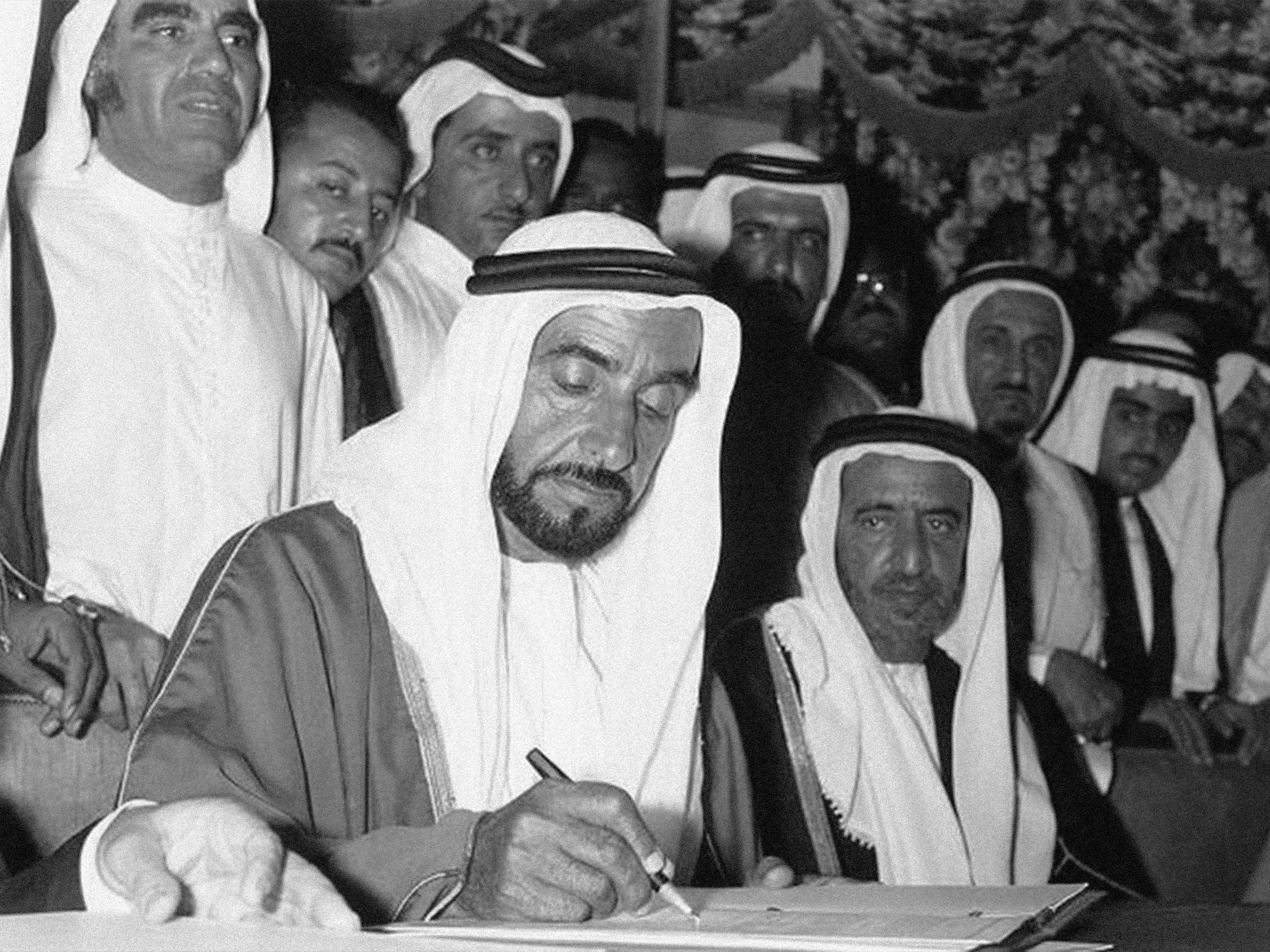
Second Layer
1971
Dubai joins the newly formed United Arab Emirates, marking a pivotal moment in its history.
The first commercial oil exports in 1969 bring newfound wealth, accelerating infrastructure and urban expansion. Trade, logistics, and tourism gain prominence as leaders push to reduce dependence on oil. Skyscrapers, modern roads, and an international airport begin reshaping the city’s skyline. A free-market economy attracts global businesses, setting Dubai apart from its neighbors.
The government envisions a future as a regional trade and finance center, driving ambitious development projects. The blend of modern infrastructure with deep-rooted traditions defines this transformative era.
Third Layer
1950
Dubai remains a small but active trading hub, balancing traditional industries with emerging economic opportunities. Pearling and fishing continue to sustain the economy, though petroleum exploration hints at future transformations.
The city’s creek serves as the lifeline of commerce, facilitating trade with Persia, India, and Africa. Modest infrastructure improvements, including early road networks and port expansions, signal the start of modernization. Under the Al Maktoum leadership, Dubai positions itself for economic diversification despite its still-limited resources.
The city fosters a reputation for business-friendly policies, attracting merchants and investors. Early efforts in urban planning pave the way for future large-scale development.
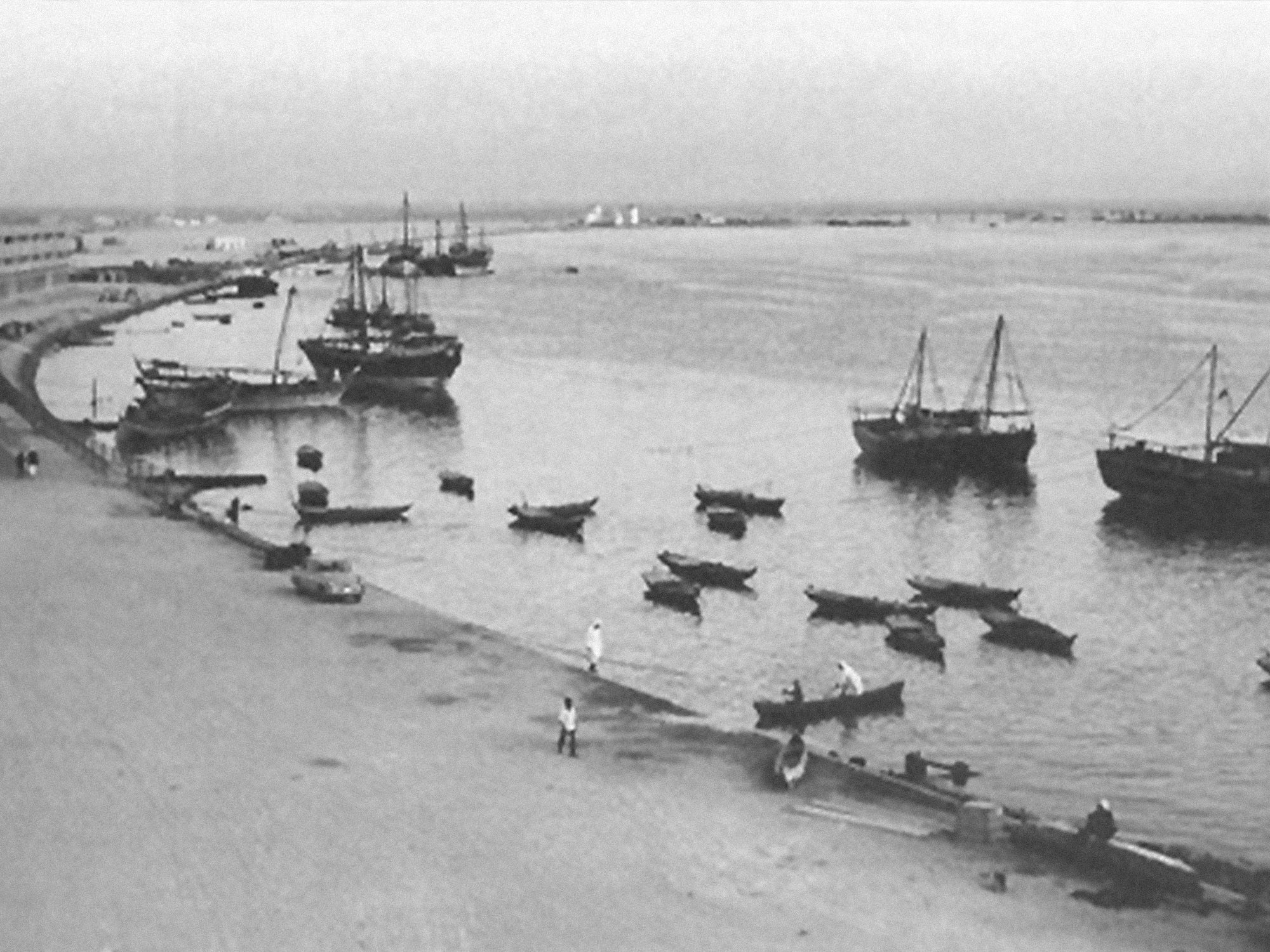
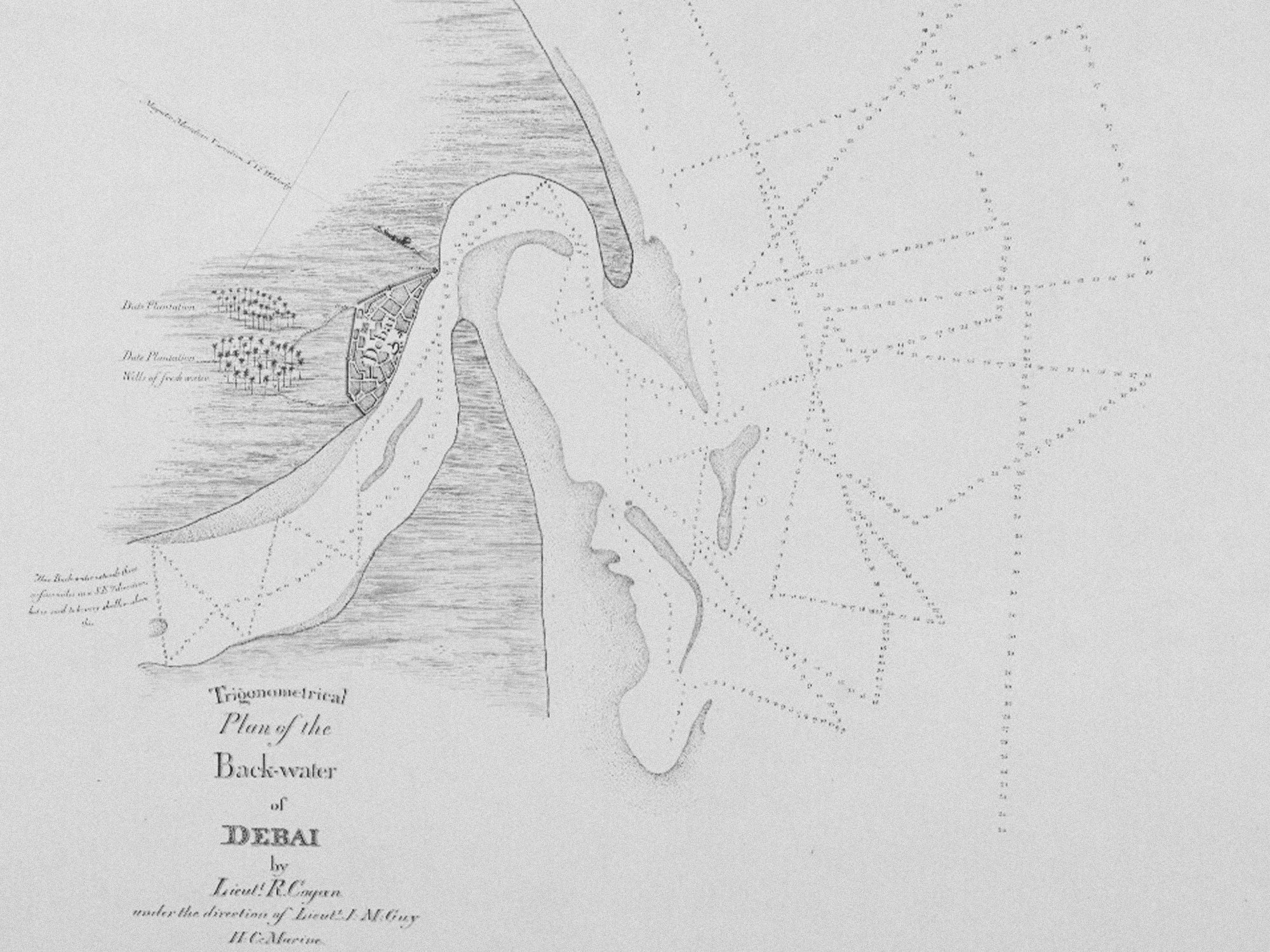
Bottom Layer
1833
Dubai establishes itself as an independent settlement, breaking away from Abu Dhabi under the leadership of the Al Maktoum family.
A modest pearling and trading port, the town benefits from its strategic position along the Arabian Gulf. Its economy revolves around maritime trade, connecting merchants to regional and Indian Ocean markets. The population, primarily Bedouins, merchants, and fishermen, relies on seasonal pearling cycles for livelihood. Governance follows a tribal structure, with the Al Maktoum dynasty shaping political and economic decisions. Despite limited infrastructure, Dubai’s openness to trade attracts settlers and commerce.
The foundations for its future as a major trade hub begin to take shape.











